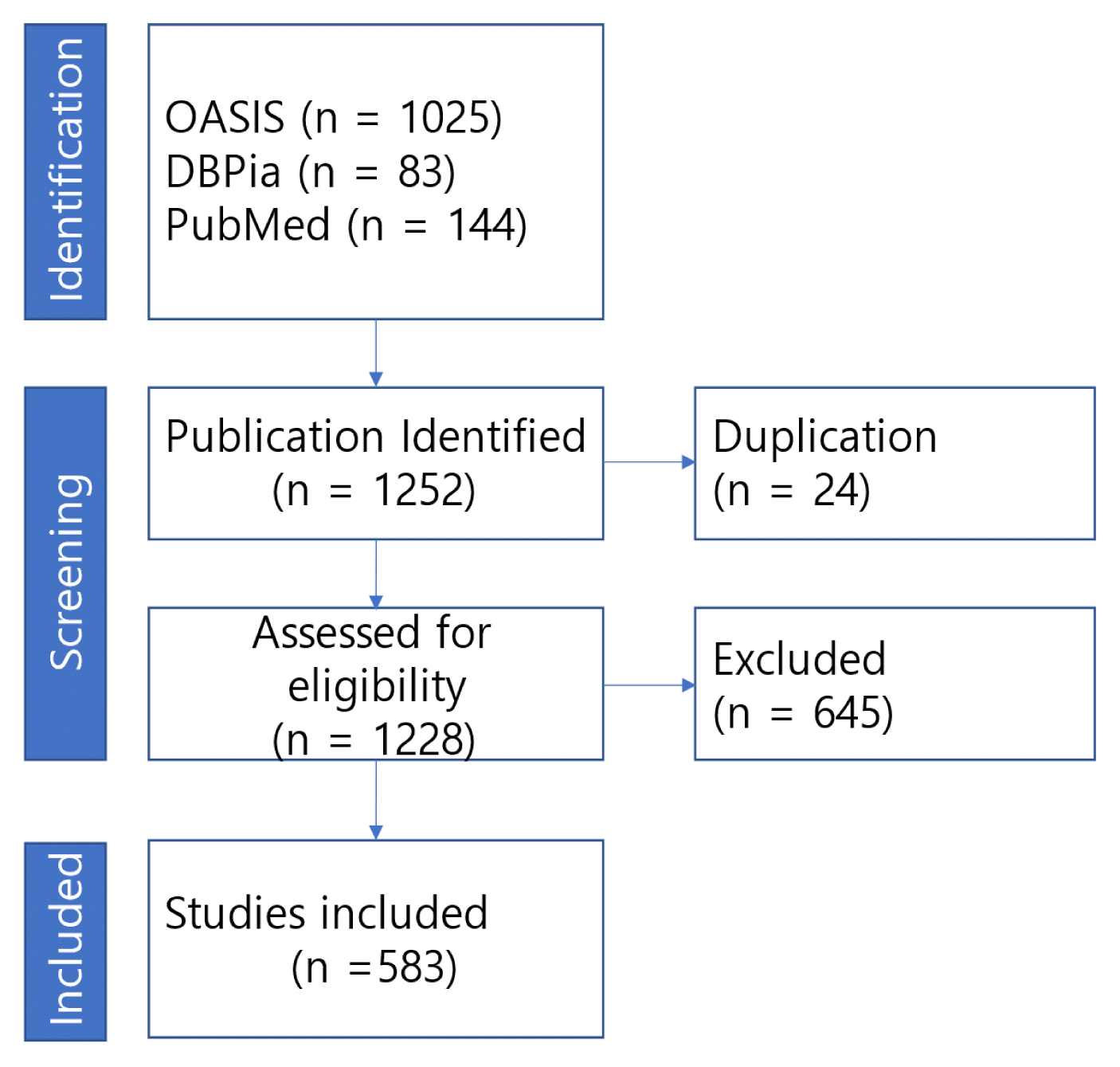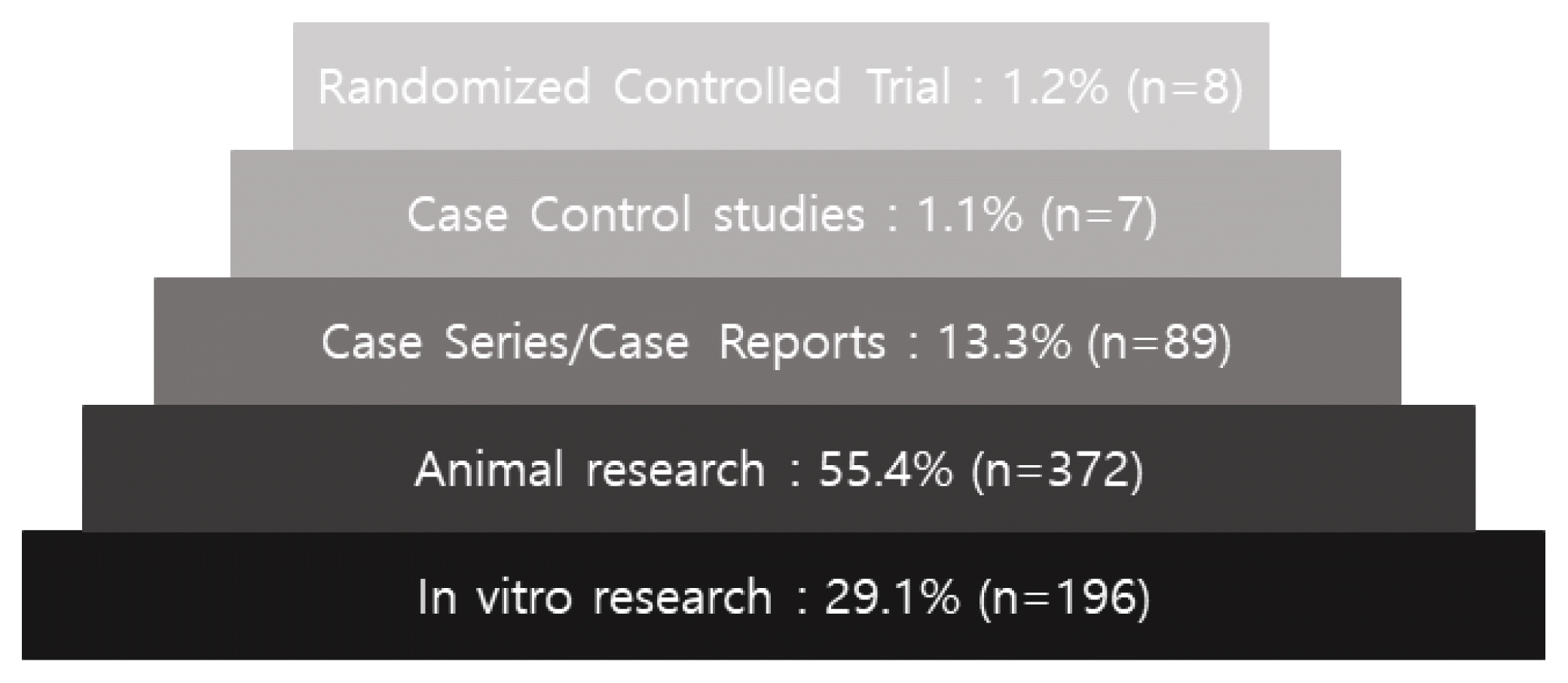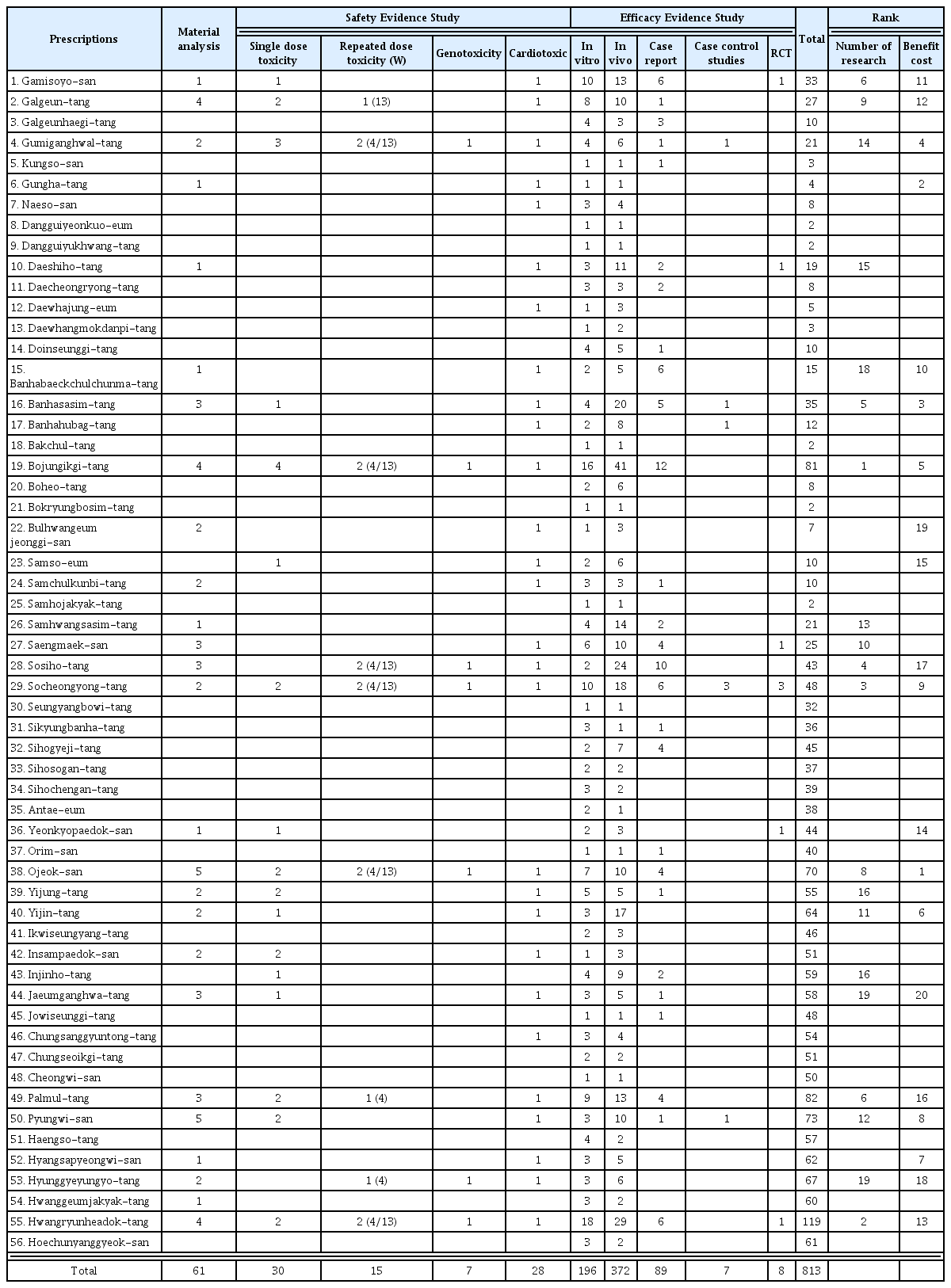References
1. Jeong W.S., Shin W.C., Hong I.H., Choi J.U.. 2017;A survey on additional needs for herbal preparations in national health insurance service. Herbal Formula Science 25(3):1229–1218.
2. Ministry of Health and Welfare. 2023;Matters concerning the application standards and methods of medical care benefits
3. Ministry of Health and Welfare. 2023;List of benefits for herbal medicine preparations and maximum amount table (No 2023-95)
4. Ministry of Food and Drug Safety. 2022;Korean Pharmacopoeia and traditional herbal medicine (herbal medicine) specification book (Ministry of Food and Drug Safety (No 2022-12)
6. Joo Y.J., Kim J.C., Lee E.K., Jang B.H., Park S.A., Park J.S., et al. 2018;Survey on the Korean Medicine Doctor's Awareness of the Extension and Activation of Herbal Medicine Preparations Insurance Benefits. Journal of Society of Preventive Korean Medicine 22(3):31–44.
https://doi.org/10.25153/spkom.2018.22.3.004
.
7. Daily pharm. Compared to Ojeog-san extracts and decoctions, the content is lower and there is a difference between products [cited 2023 Jun 1]; [1 screens]. Available from: URL:
http://www.dailypharm.com/News/235942
.
8. Ministry of Health and Welfare. 2022. PHARMACEUTICAL AFFAIRS ACT. (Act No.18307, 20. Jul, 2021)
9. Ministry of Food and Drug Safety. 2021;Regulations on notification of product approval for traditional herbal medicine & herbal medicine preparations etc (No. 2021-38)
10. Han S.S., Koo C., Hong K.E., Park Y.C., Choi S.M.. 2006;The Problem and Improvement Plan on Acupuncture Treatment in Clinical Trial Based on EBM. Journal of Acupuncture Research 23(6):1229–1137.
11. Yun Y.J., Lee J.M., Lee C.H., Cho J.H., Jang J.B., Lee K.S.. 2011;Analytic Study on Treatises of the Journal of Oriental Obstetrics & Gynecology. The Society of Korean Medicine Obstetrics and Gynecology 24(2):97–103.
12. Korea Institute of Oriental Medicine. 2021 Yearbook of traditional Korean medicine 2023;:1–488.
13. Kim S.J., Seo Y.H., Lee H.S., Chang H.K., Cho J.H., Kim K.W., et al. 2020;Research Trends of Herbal Medicines for Obesity: Mainly since 2015 to 2019. Journal of Korean Medicine Rehabilitation 30(4):89–103.
https://doi.org/10.18325/jkmr.2020.30.4.89
.
14. Kim M.K., Han C.H.. 2023;Effects of Bojungikgi-tang and its modifications for Anemia: A Systematic Review and Meta-Analysis of Randomized Controlled Trials. The Journal of Korean Medicine 44(2):181–200.
15. Yang D.H., Park J.K., Sung H.K., Sung S.H.. 2018;Trend Analysis of Clinical Studies Published in the Journal of Pediatrics of Korean Medicine. The Journal of Pediatrics of Korean Medicine 32(4):141–162.
16. Kim O.S., Seo C.S., Shin H.K.. 2013;Simultaneous Determination of Gumiganghwal-tang and Its Anti-atherosclerotic Effect. Journal of Society of Preventive Korean Medicine 17(3):165–176.
18. Choi M.K., Kim H.G., Wang J.H., Son C.G.. 2011;The Application of High Performance Thin Layer Chromatography for Herbal Formula Standardization. The Journal of Korean Medicine 32(4):68–74.
19. Cheon C.H., Park J.S., Park S.J., Kweon K.T., Shin Y.C., Ko S.K.. 2011;Necessity of Adverse Event Reporting System through the Trend of Internet News about Safety of Herbal Medicine. The Journal of Oriental Medical Preventive 15(2):131–143.
20. Ministry of Food and Drug Safety. 2022. Toxicity test standards for pharmaceuticals etc (No.2022-18)
21. National Institute of Food and Drug Safety Evaluation. 2021;Toxicity test method guideline for foods, etc. -Single dose toxicity test method :1–51.
23. Lim H.S., Kim Y.J., Kim Y.J., Kim B.Y., Jeong S.J.. 2018;Screening of 56 Herbal formulas covered by the National Health Insurance Service on Dementia-related Factors. Journal of Korean Medicine 39(3):1–16.
https://doi.org/10.13048/jkm.18020
.
24. Ko S.K.. 2003;Safety and efficacy of Korean medicine and therapeutics. Korean J. Orient. Int. Med 24(3):531–542.
25. Yang H.J., Kim S.J., Chu H.M.. 2022;A Case Report of Chronic Urticaria Improved with Korean Medicine Treatment. Journal of Korean Medical Society of Acupotomology 6(2):166–169.
https://doi.org/10.54461/jkmst.2022.6.2.166
.
26. Nam H.I., Kim D.W., Park Y.C., Lee J.E., Han Y.J., et al. 2005;Thle Chronic Perennial Allergic Rhinitis Sutterers Evaluated through the Eosinophil and Subject Symptom Numerical Index and Treated with Bojungiki-Tang. The Journal of Korean Oriental Internal Medicine 26(2):467–474.
27. Yoon J.H., Park S.B., Kim E.H., Lee J.Y., Yoon S.W.. 2022;A Case Report on Opioid-Induced Constipation in a Patient with Cancer Treated by Jowiseunggi-tang. The Journal of Internal Korean Medicine 43(2):229–236.
https://doi.org/10.22246/jikm.2022.43.2.229\.
28. Choi S.Y.. 2020;Evaluation of the Quality of Case Reports from the Journal of Korean Medicine Based on the CARE Guidelines. Journal of Korean Medicine 41(2):122–136.
https://doi.org/10.13048/jkm.20019
.
29. Jung J.H., Choi C.M., Hong J.W., Kim T.H., Rhe J.W., Lee C.R., et al. 2005;Effects of Banhahubak-tang (Banxiahoupotang) on patients with poststroke depression. The Journal of Korean Oriental Internal Medicine 26(3):563–574.
30. Hwang W.S., Chung K.J., Ju C.Y., Hong J.P., Lee J.S., Jeong H.J., et al. 2002;The Clinical Effects of Socheongryong-tang in Asthmatic Patients. The Journal of Korean Oriental Internal Medicine 23(4):651–660.
31. Jeong S.K., Heo T.S., Hwang W.S., Joo C.Y., Kim Y.W., Jeong H.J.. 2002;The Effects of Sochongryong-tang on Serum IL-4, IL-5 and IFN-γ in Asthmatic Patients. Journal of Korean Medicine 23(2):258–265.
32. Jung H.J., Ju C.Y., Lee J.S., Lee K.K., Rhee H.K., Jung S.K., et al. 2002;A Study on Changes in Blood Eosinophil, Serum IgE and T Lympocyte Subpopulation after Sochongryongtang to Asthmatic Patients. The Journal of Korean Oriental Internal Medicine 23(1):83–89.
33. Oh S.H., Lee M.S., Jeong W.N., No J.W., An Y.M., An S.Y., et al. 2022;A Retrospective Study of the Effectiveness and Safety of Banhasasim-tang, Gumiganghwal-tang, or Pyeongwee-san in Patients with Type 2 Diabetes Mellitus. The Journal of Korean Oriental Internal Medicine 43(3):363–374.
https://doi.org/10.22246/jikm.2022.43.3.363
.
34. Oh R.Y., Seol I.C., Son C.G.. 2010;Randomized Clinical Controlled Trials of a Herb Remedies in Korea - Systematic Review. Journal of Korean Medicine 31(4):1–8.
35. Park D.M., Kim S.H., Park Y.C., Kang W.C., Lee S.R., Jung I.C.. 2014;The comparative clinical study of efficacy of Gamisoyo-San (Jiaweixiaoyaosan) on generalized anxiety disorder according to differently manufactured preparations: Multicenter, randomized, double blind, placebo controlled trial. Journal of Ethnopharmacology 158:11–17.
https://doi.org/10.1016/j.jep.2014.10.024
.
36. Lee D.H., Han H.J., Kim L.H., Kang S.Y., Jang I.S.. 2011;Effect of Saengmaeg-san Extract on Xerostomia in Stroke Patients: A Double-Blind Randomized Controlled Study. The Journal of Internal Korean Medicine 32(4):542–549.
37. Park Y.C.. 2005;Effect of Socheongryong-tang on Punghan and Pungyeol Type Common Cold: A Double Blind, Placebo Controlled Study. Journal of Physiology & Pathology in Korean Medicine 19(2):524–529.
38. Bae H.H., Kang W.C., Park Y.C.. 2008;Effectiveness of a Yeonkyopaedok-san Extract in the Treatment of The Common Cold: Results of a Community-based, Double Blind, Randomized Placebo Controlled Trial. Journal of Physiology & Pathology in Korean Medicine 22(1):234–245.
39. Byun J.S., Yang S.Y., Jeong I.C., Hong K.E., Kang W., Yeo Y., et al. 2011;Effects of So-cheong-ryong-tang and Yeon-gyopae-dok-san on the common cold: randomized, double blind, placebo controlled trial. Journal of Ethnopharmacology 133:642–646.
https://doi.org/10.1016/j.jep.2010.10.056
.
40. Choi Y.J., Cho S.H.. 2018;Role of the Baseline Heart Rate Variability to the Effect of the Huanglian-Jie-Du Granule in Hwa-Byung Patients - Supplementary Analysis from the Randomized Trial Comparing Huanglian-Jie-Du Granule and Placebo for Hwa-Byung. The Korean journal of stress research 26(4):305–311.
https://doi.org/10.17547/kjsr.2018.26.4.305
.



